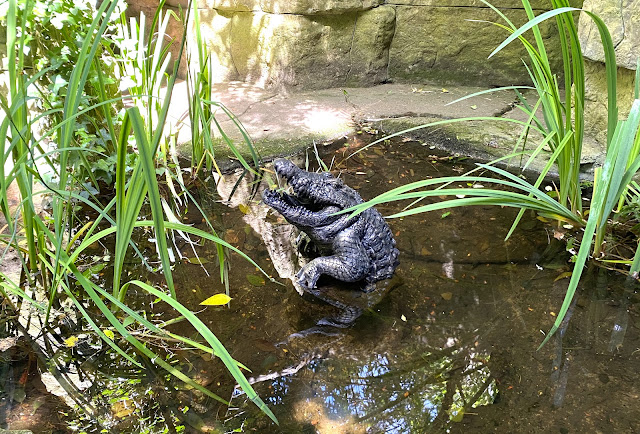Dewstow Hidden Gardens and Grottoes
Not quite knowing what to expect when I was taken on a delightful day out to Dewstow - I was completely astounded at this unusual subterranean garden built under the Edwardian Dewstow House in Monmouthshire.
The ancient estate of Dewstow was bought by Henry Oakley in 1893, who kept it for almost fifty years. He was a keen horticulturalist who created truly unique landscapes both in his gardens and beneath it. He Commissioned Pulman and Son's - renowned landscapers from London, to work on his creation with him - and this is the only one of their works with a subterranean theme. In the 1940's, after the death of Henry Oakley, and the struggles of WW2, the garden was filled in and converted to pastureland.
Most of the private gardens were destroyed or buried, and totally forgotten about, until the estate was purchased by the Harris family in 2000. Some steps were discovered in the garden, and after further investigation and excavations - they discovered far more that they ever could have imagined. The reconstruction is an ongoing project, as no records have been left about the original gardens and it is now a Grade 1 listed garden.
The original gardens contained tropical glass houses with plants from all over the world - and many of these plants can now be found in the underground grottoes. As you walk over worn stepping stones that appear to be from many decades or centuries ago, from one cave or grotto into another, you never know what you are going to find - as you will see.............
There is always something of interest to find as you delve deeper into the tunnels and cave system - many things look as if they have been there for hundreds of years; and the tasteful planting adds to the wonder.
Once you have explored the subterranean garden, there is always the "normal" garden to enjoy with its lakes, bog gardens, flower beds, rock gardens and new vistas at every turn. Stroll around enjoying the peace and tranquility of these secret gardens - appreciating how well the Harris's have done in recreating this historical garden puzzle.


























.JPG)
.jpg)
.JPG)
.JPG)
.JPG)
.JPG)
.JPG)
.JPG)
.JPG)
.JPG)
.JPG)
.JPG)
.JPG)
.JPG)
.JPG)
.JPG)
.JPG)
.JPG)
.JPG)
.JPG)
.JPG)
.JPG)
.JPG)
.JPG)
.JPG)
.JPG)
.JPG)
.JPG)
.JPG)
.JPG)
.JPG)



.JPG)
.JPG)
.JPG)
.JPG)
.JPG)
.JPG)
.jpg)
.JPG)
.JPG)
.JPG)
.JPG)












